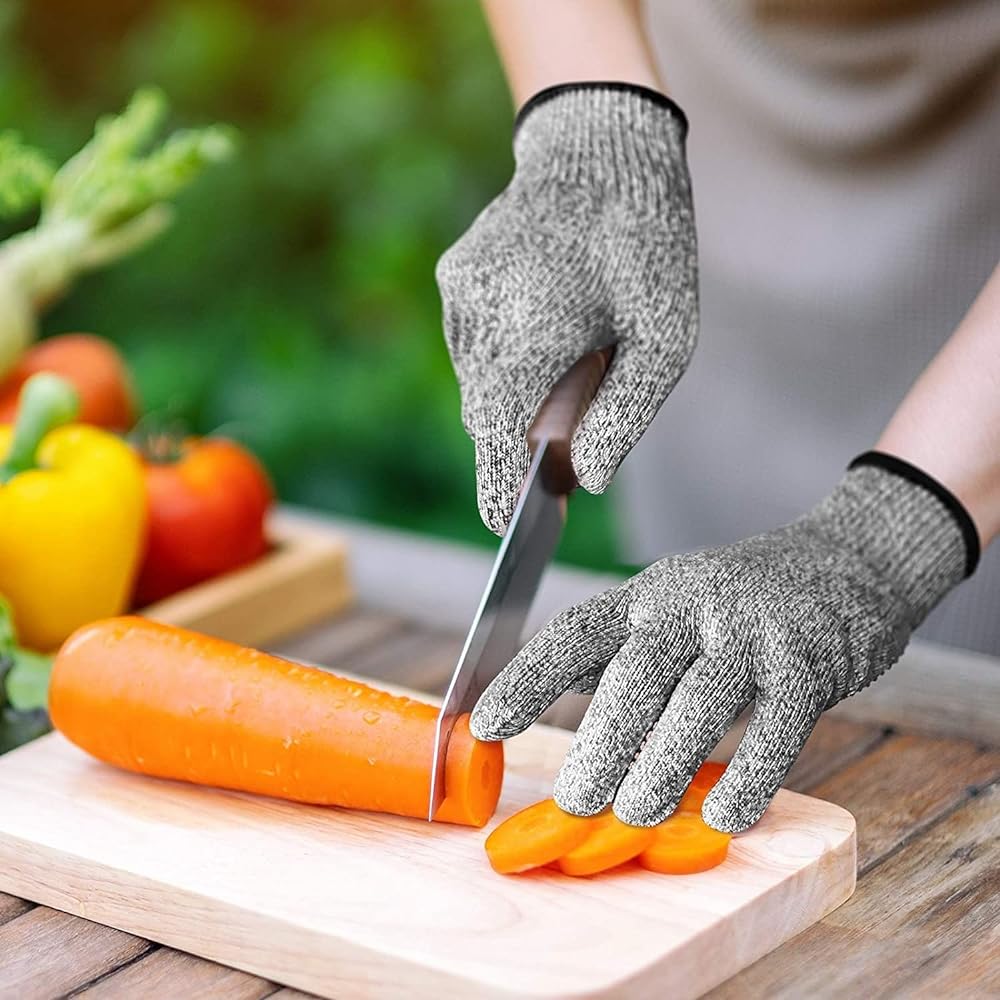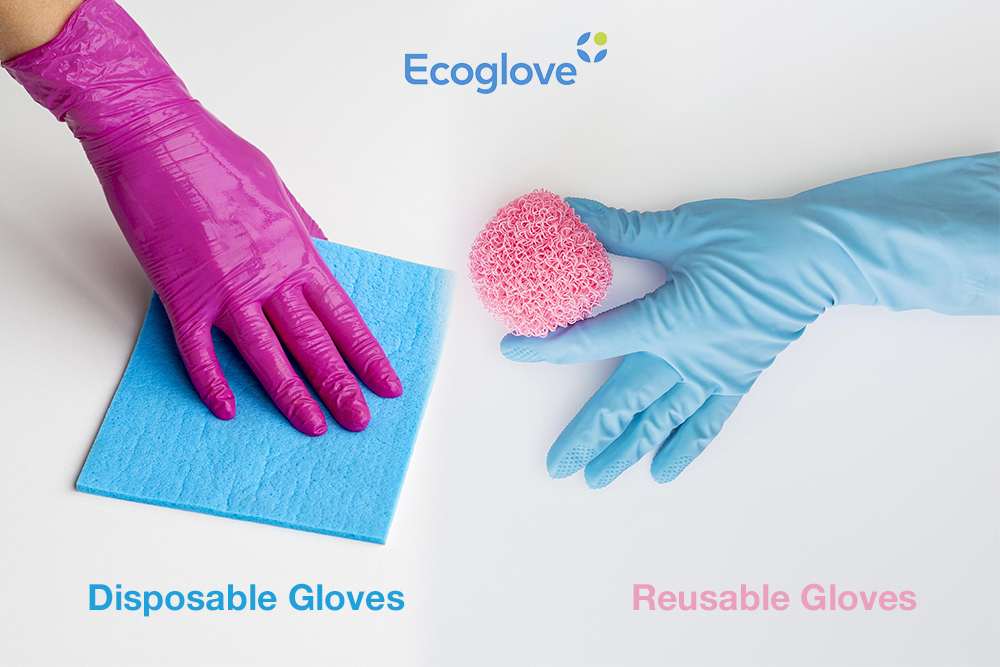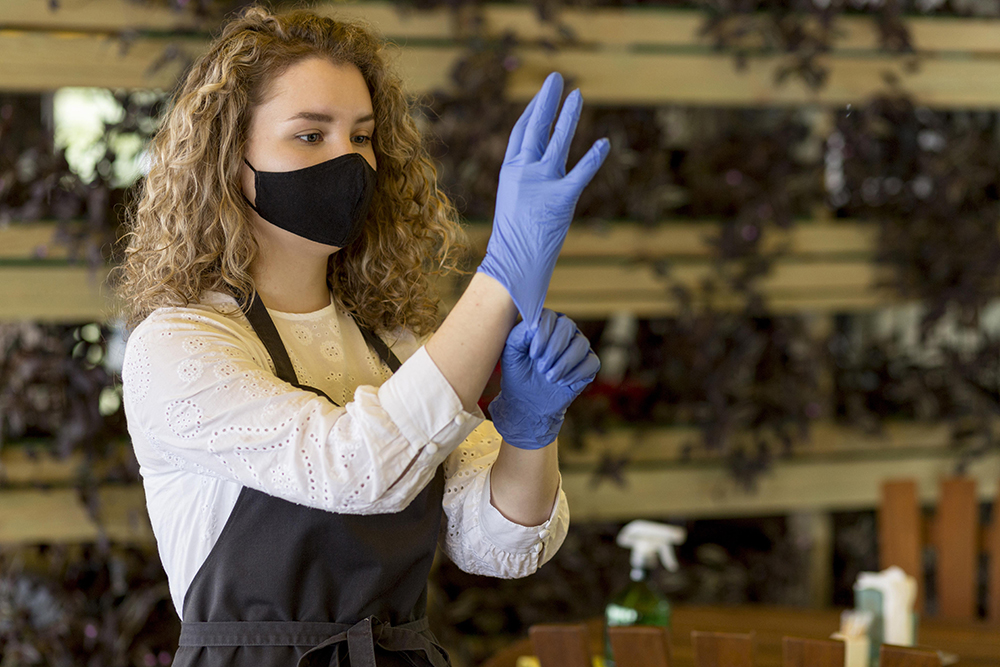In general, there are three primary types of disposable gloves: nitrile gloves, latex gloves, and vinyl gloves. Among these, nitrile (a synthetic rubber copolymer) is the most durable. Latex offers the best tactile sensitivity, while vinyl serves as the most economical option for a basic sanitary protective layer.
Latex Gloves
Latex gloves are favored in the food industry due to their flexibility, comfort, and excellent fit. They provide a high level of tactile sensitivity, making them ideal for tasks that require precision, such as garnishing or handling delicate ingredients. However, it’s crucial to note that latex allergies are common, so alternative gloves should be readily available for those who are allergic.

Nitrile Gloves
Nitrile gloves are an excellent alternative to latex gloves, providing similar flexibility and sensitivity without the risk of allergic reactions. These gloves are highly resistant to punctures, chemicals, and oils, making them suitable for handling raw meats, cutting vegetables, or working with acidic foods. Nitrile gloves are also durable, ensuring reliable protection during extended use.
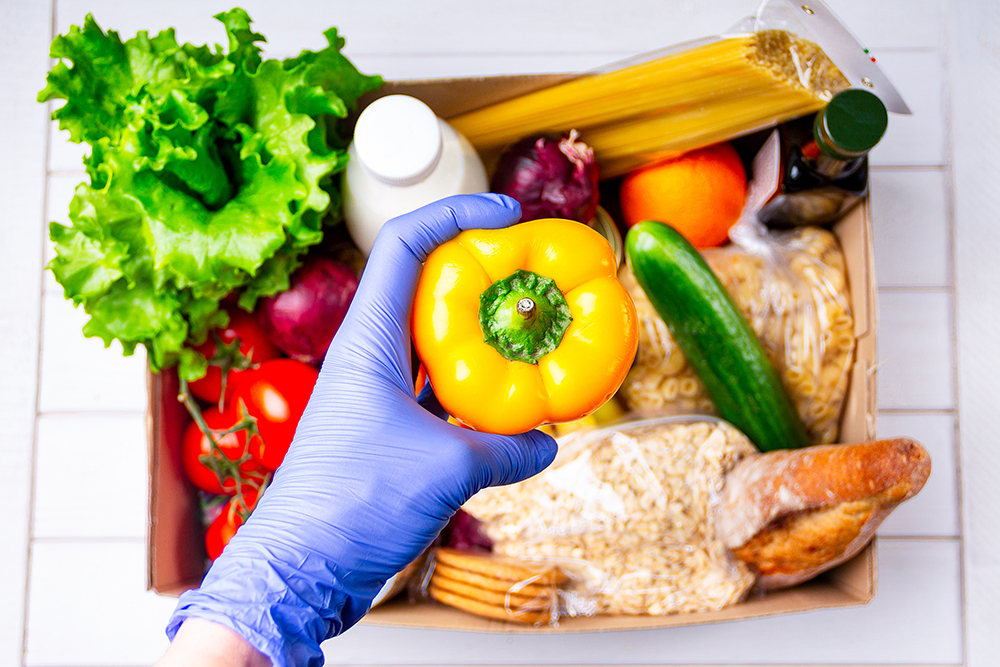
Vinyl Gloves
Vinyl gloves are a cost-effective choice for food handling and preparation. Although they are not as durable or elastic as latex or nitrile gloves, they are suitable for tasks that require frequent glove changes, such as sandwich making or salad preparation. Vinyl gloves are free of latex proteins, making them a safe option for individuals with latex allergies.
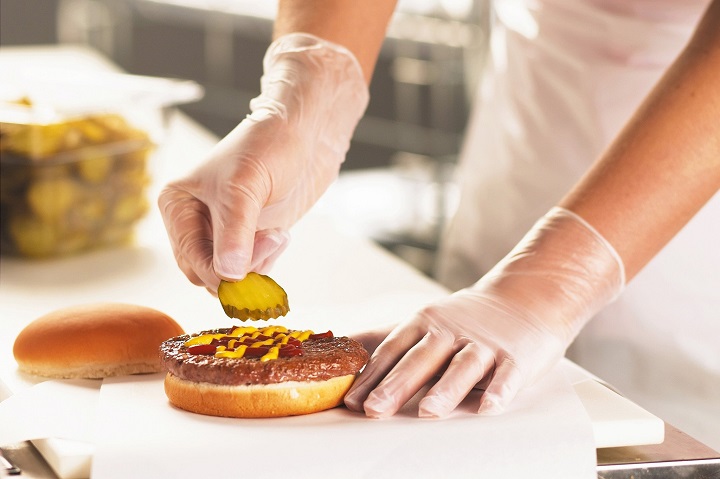
Polyethylene Gloves
Polyethylene gloves, also known as poly gloves, are loose-fitting and designed for quick tasks. They are commonly used in fast food settings or for serving ready-to-eat foods. While they provide minimal protection and are not as durable as other types of gloves, their low cost and ease of use make them practical for short-term tasks.
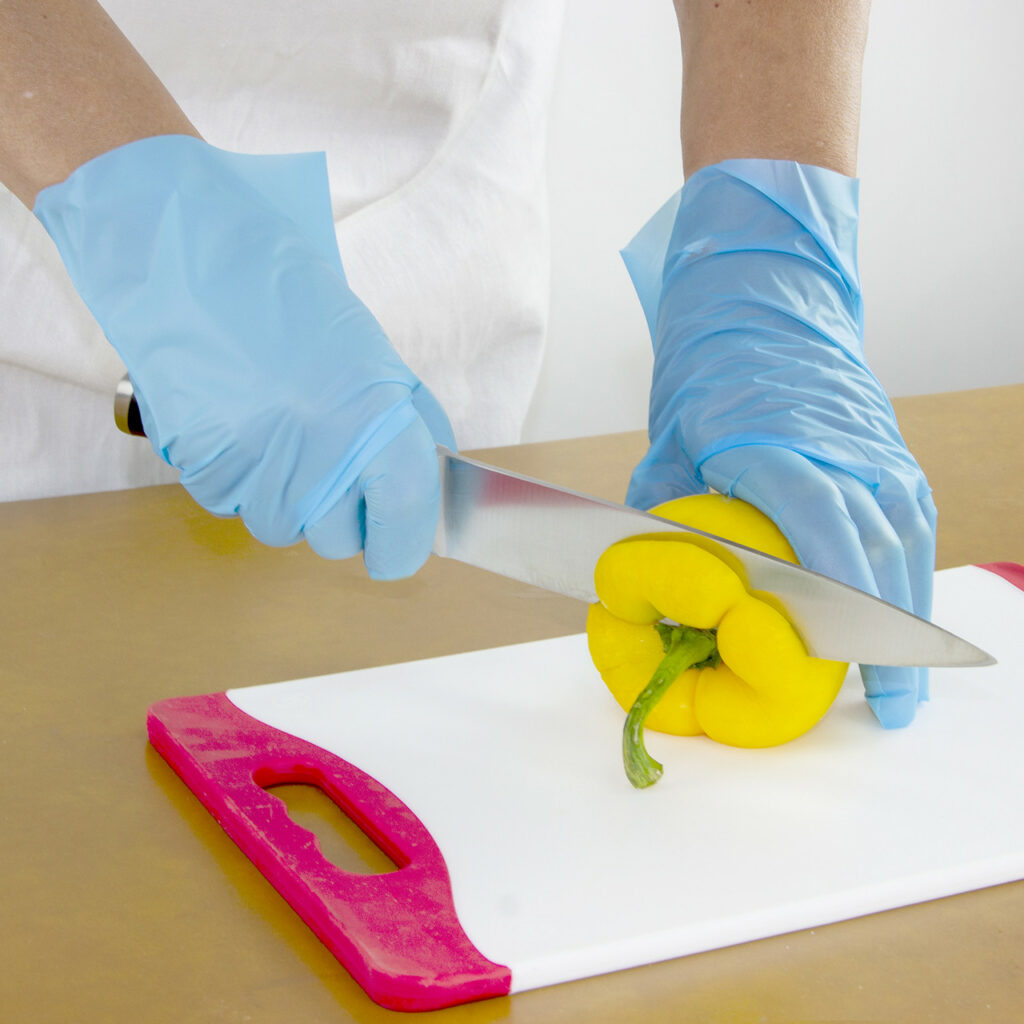
Neoprene Gloves
Neoprene gloves are heat-resistant and ideal for tasks involving hot food or liquids. They offer excellent protection against burns and are often used for handling hot pots, pans, and grills. Neoprene gloves are also resistant to chemicals and oils, making them versatile for various cooking applications.
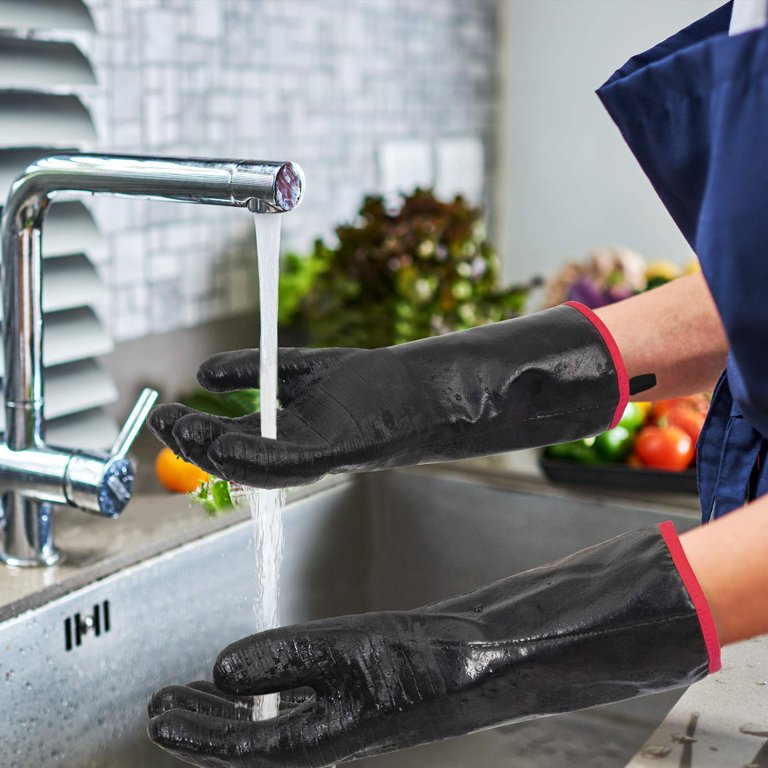
Cut-Resistant Gloves
Cut-resistant gloves are essential for tasks that involve sharp tools, such as chopping vegetables, filleting fish, or slicing meat. These gloves are made from materials like Kevlar or stainless steel mesh, providing a high level of protection against cuts and abrasions. They enable cooks to work safely and confidently with sharp knives and other cutting instruments.
